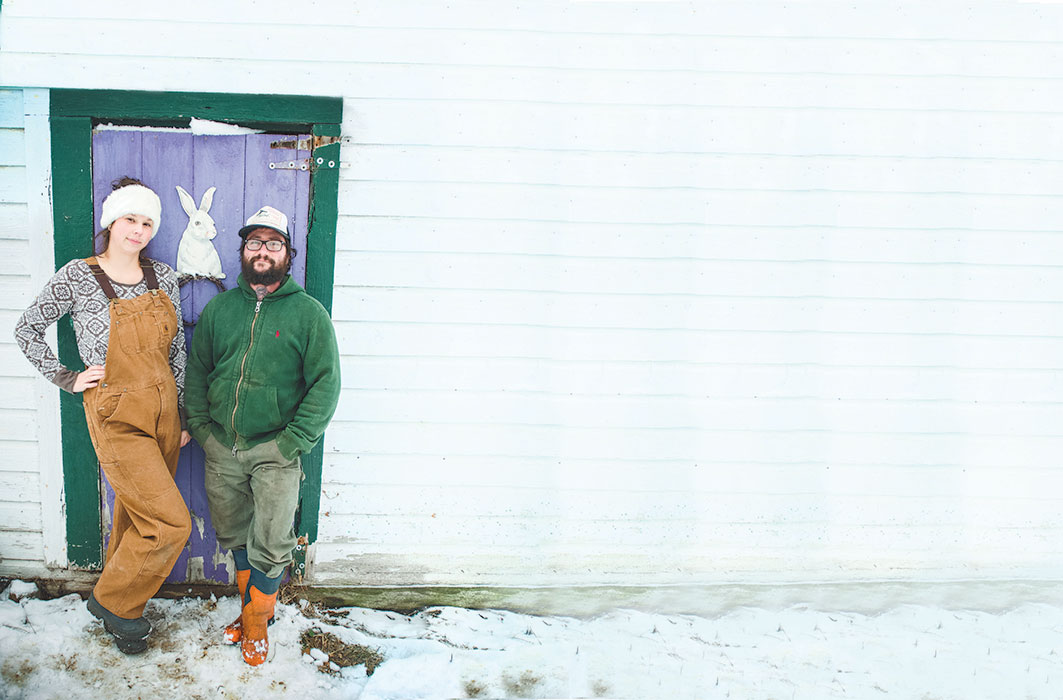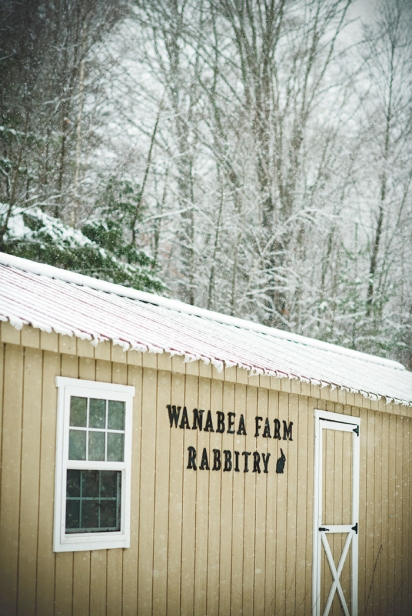Is Rabbit The New Chicken?
The late M.F.K. Fisher, in Serve It Forth, her delightful book of essays on the history of food, published in 1937, tells us that in the early 1500s, before the advent of French cuisine, we would be dining on “such favorites of the Middle Ages as dormouse pasty and a mixed pie of snake, porpoise, swan and plum-stuffed crane.” To many Americans the prospect of eating rabbit seems every bit as outlandish.
Europeans have been eating rabbit for centuries. Driving through the French countryside, it is not in the least unusual to find small rabbit hutches behind many houses and farms. Rabbits provide an easily accessible source of protein with the added benefits of being low in fat as well as delicious. This tradition did not survive our forefathers’ journey to the New World.
The gastronomic hurdle seems to be something known as the “Easter Bunny Syndrome.” Our culture does not equate those furry little animals with dinner. But this attitude has been evolving over the last several years as the farm-to-table enterprise and the impetus toward ethical local butchery are shifting the way we look at the source of our food. The health benefits of eating rabbit are becoming more widely known (think lean meat and vitamin B12) and appreciated by good-food advocates including food ethicist Michael Pollan, who believes that “rabbits make more sense than chickens.”
Melissa and Shawn Comar are raising rabbits at their Oak Summit Farm in Pawlet. They raise New Zealand for market and Holland Lops for pets. It’s a small operation so far and their customers are friends and family. Their dozen rabbits live in wire cages that are high off the floor, where they are provided with pellet grain food, water and cool, airy environment. The does are in the little hutch and buck is in his own large cage just beside it.
“We bring the does to the buck for mating and 31 days later the doe will kindle.” A typical size for a litter is eight to 12 “kits,” as the new rabbits are called, and a doe can have up to 5 litters a year. The kits are raised in their cages until they reach approximately 3–5 pounds. The Comars do their own slaughtering in a nearby commercial kitchen. When dressed, each rabbit will yield around two and half pounds of meat.
“Rabbits are extremely versatile livestock that produce a superior meat without the use of medications or hormones,” says Melissa.
Their popularity as a food source as always been that they grow rapidly, mature at an early age, reproduce at high rates and require little space. They have a high percentage of protein and a low percentage of fat and cholesterol. According to Slow Food USA, “Rabbits can produce six pounds of meat on the same amount of feed and water it takes a cow to produce just one pound.” The USDA has concurred that domestic rabbit meat is the most nutritious meat available. It is also easy to digest, making it attractive for people on special diets.
Bruce Marchegiani and his wife, Judy, have been raising rabbits for 10 years at their Wanabea Farm Rabbitry, a small commercial operation on three acres in Manchester, Vermont. Bruce grew up eating rabbit every week cooked by his Italian grandfather and has fond memories of those meals. When he retired, he decided to go into the business of supplying rabbit to restaurants in southern Vermont.
Bruce and Judy raise approximately 250–300 rabbits at one time and he prepares 50–90 a week for sale to local chefs and other customers. He has five breeds that he has been crossbreeding for their selected attributes. The Flemish and the Chinchilla have very large ears, which help keep them cool. The California and the New Zealand are the traditional breed used for meat. He also raises Satins and Palominos.
“The aim is for a meat-to-bone ratio of 60%,” explains Bruce. “This gives a chef at least four servings from each rabbit.”
He also keeps his does in wire cages off the ground and feeds them with high-quality pelleted grain that is 80% alfalfa, which he buys from Poulin Grain, a trusted family-owned feed company in Newport, Vermont. His rabbits receive no medications or hormones. On Mondays he goes to the Vermont Bunny Pen in Orwell to do the butchering himself. Afterward the skinned rabbits are thoroughly washed, dipped in cold spring water, which turns them white, and then hung to dry. When ready, they are vacuum packed and refrigerated or frozen.
According the Rabbitbreeders.us, the world’s largest rabbit breeders directory, there are 17 rabbit breeders in Vermont, though not all of them raise rabbits for meat. Phil Brown, owner of Vermont Rabbitry in Glover, has been in the business since 1987 and is one of the largest suppliers of rabbit to restaurants, high-end grocery stores and gourmet shops throughout Vermont. He gave up growing his own rabbits a few years ago and depends on local growers to supply him. He estimates he processes around 4,000 rabbits per year but the demand fluctuates throughout the year.
“Rabbit is the best meat on the market,” he says, “but relatively expensive to raise.” The grain-based pellets have risen in price in recent years and the rabbits cannot be raised on an industrial scale. Brown believes that the future for rabbit is good as more and more people recognize the health benefits.
Braising seems to be the preferred method of cooking rabbit due to its lack of fat, but there are many recipes for rabbit and it is interchangeable with chicken. Bruce’s favorite way to cook rabbit is stewed with a good red wine and Hen of the Woods mushrooms. Rabbit can be used in place of chicken or pork in recipes, he says, but should be seasoned properly as the all-white meat is quite mild.
Melissa likes to bread the rabbit pieces and bake at 375° for 50 minutes. I decided to try the classic French bistro recipe for rabbit, Lapin à la Moutarde, in which rabbit pieces are simply sautéed with Dijon mustard, white wine, onions and parsley. After reading several versions, I came up with my own adaptation.






